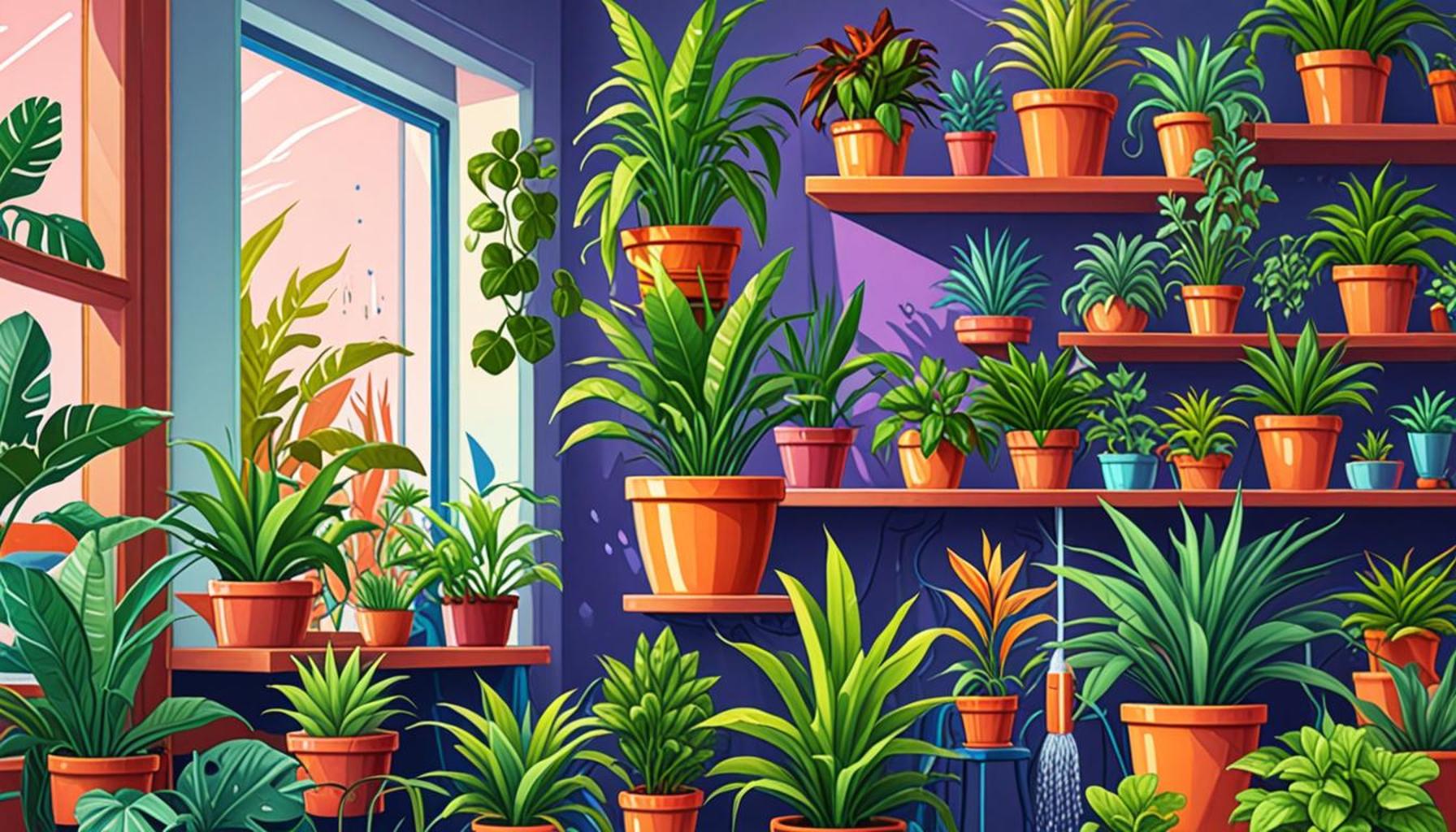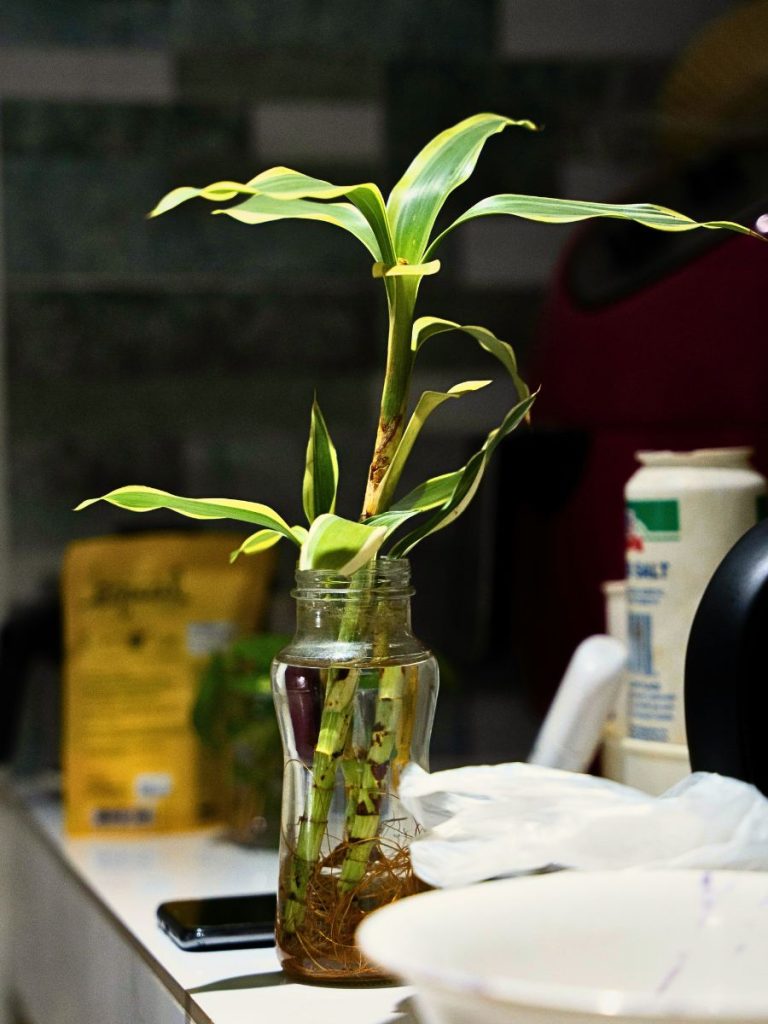How to Create an Efficient Watering Schedule for Indoor Plants

Understanding Indoor Plant Needs
Indoor plants can transform your living space, offering both aesthetic value and improved air quality. However, keeping them thriving requires more than just a touch of green thumb. Establishing an efficient watering schedule is essential for maintaining their health and vitality.
Why a Watering Schedule Matters
A well-planned watering routine ensures that your plants receive the right amount of moisture without the risk of overwatering or underwatering. Here are some key reasons to create a schedule:
- Promotes Healthy Growth: Consistency in watering helps plants develop strong root systems. For instance, houseplants like pothos and snake plants thrive with a consistent moisture level, allowing them to flourish in your home.
- Prevents Disease: Overwatering can lead to root rot and fungal issues, which are common problems for indoor gardeners. Conversely, underwatering can lead to dehydration and stress on the plant. By adhering to a schedule, you can better control these conditions, minimizing stress on your plants and the potential for disease.
- Time-Saving: A scheduled routine makes it easier to remember when to water. You can use calendars or smartphone reminders to ensure that your plants receive timely hydration, allowing you to enjoy their beauty without constant worry.
Factors to Consider
Creating an effective schedule is not one-size-fits-all. Consider these factors that influence how often you should water:
- Plant Species: Different plants have varying water needs. For example, succulents and cacti thrive in dry conditions and require much less frequent watering compared to tropical plants like ferns that enjoy moist soil. Familiarizing yourself with the specific needs of each species can enhance their growth.
- Humidity Levels: Areas with higher humidity may require less frequent watering. In the humid climates of southern Florida, for instance, you might find that your indoor plants retain moisture longer, allowing you to extend the period between waterings.
- Seasonal Changes: Indoor plants may need more water during growth periods in spring and summer. As daylight increases, plants like the fiddle leaf fig or rubber plant often enter a growth phase and can require additional hydration to support their flourishing leaves.
By understanding these elements, you can tailor a watering schedule that supports your indoor garden’s unique needs. Observing your plants closely will help you identify their hydration preferences: do the leaves look droopy, or are the tips browning? These signs will inform your watering practices.
Additionally, exploring methods to assess moisture levels, such as using a moisture meter or the finger test, can lead you to become more attuned to your plants’ needs. Dive deeper into the nuances of plant care as we explore how to assess moisture levels and create a systematic approach to watering, ensuring a vibrant and flourishing indoor garden.

LEARN MORE: Click here for essential irrigation tips
Assessing Moisture Levels
One of the primary steps in creating an efficient watering schedule for indoor plants is accurately assessing moisture levels. Over time, you will become attuned to your plants’ needs by observing indicators of their hydration status. Here are a few effective methods to determine when to water:
- Finger Test: A simple yet reliable method is to insert your index finger about an inch into the soil. If the soil feels dry to the touch at this depth, it’s time to water. If it feels moist, hold off for a few more days as the plant may still be satisfied.
- Moisture Meters: Investing in a moisture meter can take the guesswork out of watering. These handy tools provide a quick reading of the soil’s moisture content, allowing you to easily determine when your plants need hydration.
- Weight of the Pot: Another effective way to gauge when to water is by lifting the pot. A pot that is light means it lacks moisture, while a heavier pot indicates the soil is still wet. This method requires some practice, but it can help you intuitively recognize your plants’ watering needs.
- Observation of Leaves: The health of leaves often serves as a visual cue. Drooping or yellowing leaves may indicate that your plant is either overwatered or underwatered. Chlorosis, or yellowing of leaves, generally suggests that a plant is struggling, possibly due to inadequate water supply.
Each of these techniques can guide you in determining the appropriate time to water. As you get to know your plants’ quirks, make note of how quickly they dry out; some plants, like the peace lily, are more prone to wilting than others, while others, such as the succulent, require much less frequent watering. The size, type of pot, and soil mix can also influence moisture retention and will play a role in your watering schedule.
Creating a Customized Watering Schedule
Once you have a good grasp on moisture levels, it’s time to design a customized watering schedule tailored to your indoor plants. You can start by creating a weekly calendar to track when each plant was watered. Considerations for customization include:
- Grouping Plants: Plants with similar watering needs can be grouped together, allowing for more efficient watering. For example, tropical plants that thrive on moisture can be watered at the same time, while succulents can be scheduled for their own watering time.
- Time of Day: Watering during the morning is generally recommended, as it allows plants to absorb moisture effectively and minimizes evaporation losses. Evening watering should be approached with caution, as it can lead to damp roots overnight and promote fungal diseases.
- Adjusting Based on Season: Remember that your schedule may need to evolve throughout the year. In winter, plants often enter a period of dormancy and require less water than during the active growing season of spring and summer.
By taking the time to assess moisture levels and customizing a watering schedule that fits your plants’ unique requirements, you will be well on your way to creating a thriving indoor garden. As we delve deeper into this topic, you’ll discover how to monitor your plants’ health and adapt your methods for even greater success.
Understanding Your Plants’ Needs
Creating an efficient watering schedule starts with a deep understanding of your indoor plants. Each species has unique needs regarding moisture levels, light exposure, and temperature. For instance, succulents and cacti thrive in dry conditions and should only be watered when the soil is completely dry. On the other hand, tropical plants, such as ferns and peace lilies, prefer consistently moist soil. To determine the specific watering requirements for your indoor plants, research their natural habitats and mimic those conditions. This tailored approach ensures that your plants receive the optimal amount of water for healthy growth.
Assessing Environmental Factors
The environment significantly affects your plants’ watering needs. Factors such as humidity, light intensity, and temperature can vary widely from room to room and throughout the seasons. For example, plants in brighter, sunnier areas will typically require more frequent watering compared to those in lower-light conditions. Similarly, warmer indoor temperatures can accelerate evaporation rates, increasing your plant’s need for water. Monitoring these environmental conditions and adjusting your watering schedule accordingly can lead to healthier, thriving indoor plants.
Utilizing Technology for Watering Schedules
Incorporating technology into your plant care regimen can streamline the process of creating an efficient watering schedule. Several smart gardening devices are now available that can monitor soil moisture levels, temperature, and light exposure. These devices can send alerts to your phone when it’s time to water, taking the guesswork out of plant care. Not only do they help in establishing an accurate watering schedule, but they also allow you to track your plants’ growth and health over time. Embracing technology can enhance your indoor gardening experience and promote the thriving of your beloved plants.
Common Mistakes to Avoid
While establishing a watering schedule, it’s easy to make common mistakes that may hinder your plants’ health. Overwatering is one of the most frequent pitfalls, leading to root rot and other problems. A reliable method to avoid this is to check the soil moisture before watering; simply inserting your finger an inch deep can give you a good indication. Similarly, neglecting the seasonal needs of your plants can lead to issues, as most plants require adjustments in care routines as temperatures fluctuate. Being aware of these common mistakes can significantly improve the success of your watering strategy.
| Category | Description |
|---|---|
| Understanding Plant Needs | Research specific moisture needs for each type of plant. |
| Environmental Factors | Consider light and temperature variations when watering. |
| Utilizing Technology | Use smart devices to monitor moisture and schedule watering. |
| Common Mistakes | Avoid overwatering and neglecting seasonal changes. |
DISCOVER MORE: Click here to learn about different types of cacti and their care
Monitoring Plant Health and Adjusting Care
After establishing a customized watering schedule, the next step involves regularly monitoring your plants’ health and making necessary adjustments to your watering regimen. Keeping a vigilant eye on your indoor garden can prevent a host of issues, from underwatering to overwatering, ultimately leading to a flourishing environment. Here are a few effective approaches to enhance your watering strategy further:
- Using a Plant Journal: Consider maintaining a plant journal where you document the watering dates, plant health status, and any observed changes. This method not only helps you keep track of when to water but also offers insights into each plant’s blooming cycle, enabling you to refine your schedule over time.
- Temperature and Humidity Awareness: The climate within your home plays a substantial role in moisture retention. Indoor heating during winter can quickly dry out the air, leading to faster soil drying. Therefore, use a hygrometer to measure humidity levels and adjust your watering frequency as needed. Plants in drier rooms will benefit from more frequent attention.
- Check for Pests: Pests can exacerbate water-related issues, as infested plants may require more water due to root stress. Examine leaves and soil for signs of infestations such as aphids or spider mites. Regularly inspecting your plants allows you to address pest issues promptly, ensuring your watering efforts maintain maximum effectiveness.
As you monitor your plants, look out for subtle signs of stress. For instance, while drooping leaves could indicate drought, they can also be a hint of root rot due to over-saturation. During the summer months, plants can require up to twice the water they need in winter; hence, staying attuned to your indoor garden’s health is crucial for adapting your schedule.
The Role of Soil Quality
Another critical aspect of an efficient watering schedule for indoor plants is the quality of the soil. The type of soil you use has a direct impact on moisture retention and drainage properties:
- Choosing the Right Soil Mix: Each plant species has distinct soil preferences. For instance, succulents thrive best in a well-draining mix with sand and perlite, while ferns favor a moisture-retentive mix that holds onto water. Researching the specific needs of your plants when selecting soil can save you from potential watering woes.
- Amending Soil for Improvement: Over time, soil can degrade, losing its structure and ability to retain water. Regularly amend your soil with organic matter, such as compost or worm castings, which enhance soil fertility and structure, allowing it to hold moisture better. Additionally, mixing in elements like coconut coir can improve water retention for potting mixes.
As you navigate the intricate world of indoor plant care and watering schedules, remember that consistency is key. Even minor changes in temperature or light can affect how quickly your plants dry out. By continually observing, adjusting, and ensuring your soil supports optimal growth, you’ll cultivate a thriving indoor landscape that remains a source of joy in your living space.
DIVE DEEPER: Click here to learn about proper irrigation techniques
Conclusion
In summary, establishing an efficient watering schedule for indoor plants is an art that balances observation, knowledge, and adaptability. By understanding your specific plants’ needs, you create a tailored approach that promotes vibrant growth and longevity. The journey begins with a keen awareness of factors such as soil quality, temperature, and humidity, all of which distinctly affect moisture levels. As you refine your watering routine, be sure to document your methods in a plant journal, highlighting key observations that inform your care techniques.
Furthermore, embracing a proactive stance on monitoring your indoor garden will pay dividends. With tools like hygrometers and consistent checks for pests, you can quickly identify and troubleshoot potential problems before they escalate. Remember, seasonal changes and environmental fluctuations can dramatically influence your plants’ hydration needs, necessitating a flexible watering schedule that adapts accordingly.
Ultimately, creating a successful watering strategy is not merely about the amount of water applied but rather fostering a comprehensive understanding of each plant species’ unique characteristics. Armed with this knowledge, you will not only enhance your plants’ vitality but also cultivate a deeper appreciation for the world of indoor gardening. As you embark on this enriching horticultural adventure, let curiosity and patience guide you, leading to a lush indoor sanctuary that radiates health and vitality.



